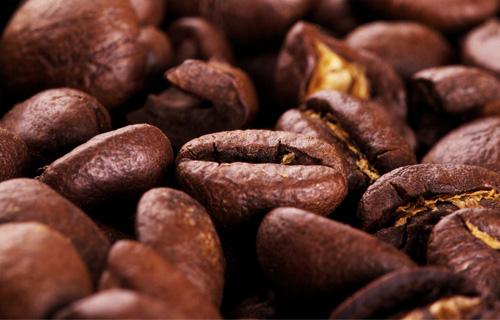Flavor description of graded producing area of raw bean treatment in Sidamo Coffee producing area
The Sidamo producing area, which is 1400-2200 meters above sea level, is a famous boutique coffee area in southern Ethiopia, bordering Kenya. The washed Sidamo is light green, the beans are small, the growth oval, the fruit is full, the average quality is good, the smell is fragrant and mellow, the coffee raw beans are slightly gray, some places are thick and some are small, the acidity is soft and strong, and the mellowness is suitable. Sweet and spicy, it is one of the courtyard coffee in the highlands of southern Ethiopia.
Unlike ordinary African coffee, Sidamo has clear acidity, smooth taste and delicate floral smell. The taste is unique and mellow, the taste is chic and pleasing, and the slowly rising end rhyme contains chic sweetness. A drop of entrance, endless aftertaste, with wild beauty, is considered to be a thorny rose in coffee.
[Sidamo sidamo]-- Origin
Follow the caf é (Wechat official account vdailycom) and found that Beautiful Cafe opened a small shop of its own.
The coffee flavor of Sidamo is very diverse, because of the different soil composition, regional microclimate and countless native coffee varieties, the coffee produced in each urban area has obvious differences and characteristics. Sidamo producing area (Sidama) is located in the south of Ethiopia. The industry here is dominated by agriculture, and the coffee growing area is located around the East African Great Rift Valley (Great Rift Valley).
"Ethiopian Sidamo" is a type of single origin and grows in Arabica coffee in Ethiopia's Sidamo province. Like coffee in most African countries, Ethiopian Sidamo is characterized by small gray beans, but characterized by its rich, spicy, wine or chocolate-like taste and floral aroma. The most distinctive flavors found in all Sidamo coffee are lemon and citrus with bright and crisp acidity.

[washing treatment]-raw bean treatment
Water-washed coffee flavor is not easy to have wild flavor, with pure, refreshing characteristics, suitable for City to Full City baking degree; some essential excellent Ethiopian water-washed coffee beans, sometimes can be detected obvious rising lemon, citrus essential oil, jasmine, honey and so on, the sour taste is obvious, mellow and thin.
[what is G1]-grading
Coffee beans in Ethiopia are graded according to the proportion of defective beans. Indonesian beans are mainly divided into six grades, namely G1~G6. Ethiopia also uses this method, with the highest grades of washed beans G1 and G2, and those of sun-dried beans G1 and G3.
Washing: Grade-1;Grade-2 (G1 > G2)
Sun: Grade-1 and Grade-3~Grade-5 (G1 > G3 > G4 > G5)
[factory introduction]-production area
Shakisso/Shakiso is located in the Guji producing area of Sidamo, in the south of Oromia, close to Sidama and Gedeo. There are many pits in this area, which were used to mine gold in the early days, so there are many potholes in this coffee growing area. This makes people dangerous when walking between coffee growing areas. Shakiso is a unique producing area of Guji / Cedamory, even in Cedamori, which is a remote area away from most coffee producing areas, and another famous local product is gold. Miners, land, race and other factors also caused unrest in the region in 2006. As a result, the biggest problem facing the region now is that ─ needs manpower to maintain the growing area and harvest coffee.
Local small farmers began growing organic coffee in 2001 and work closely with medium-sized coffee producers because they are familiar with how to grow forest coffee in the highlands. It is one of the micro-producing areas with regional characteristics in the Sidamo producing area. The coffee in this region is quite unique, and the coffee produced has often attracted the attention of the market. The original meaning of Ninety Plus's legendary nekisse comes from Nectar from shakisso, and its producing area and name are all from Shaquiso Shakisso.
Flavor description: lemon and citrus, bright and crisp acidity, lemon, citrus, white grape juice, blackcurrant, Earl tea at the end
Important Notice :
前街咖啡 FrontStreet Coffee has moved to new addredd:
FrontStreet Coffee Address: 315,Donghua East Road,GuangZhou
Tel:020 38364473
- Prev

The most suitable method for brewing Sidamo coffee beans
Follow the comments (Wechat official account vdailycom) found that Beautiful Cafe opened a small shop of its own most suitable for Sidamo coffee beans brewing test: Philharmonic pressure altitude: 1900-2200 meters grade: G1 treatment method: full-day drying beans: original brewing method: Philharmonic pressed powder water ratio: 1:13 brewing temperature: 90 ℃ brewing time: 2 minutes freshness: 3
- Next

Ethiopia 90+levelupDerarEla Dre Ella
Following Cafe Review (official Wechat account vdailycom) found that the Beautiful Cafe opened a small shop of its own [name]: Ethiopia 90+levelupDerarEla de Riera (Flower language) [roasting]: recommended light baking [grade]: excellent [granule]: ★ full [acidity]: ★★★★ micro acid [balance]: ★★★★ is very stable [flavor]: non
Related
- Detailed explanation of Jadeite planting Land in Panamanian Jadeite Manor introduction to the grading system of Jadeite competitive bidding, Red bid, Green bid and Rose Summer
- Story of Coffee planting in Brenka region of Costa Rica Stonehenge Manor anaerobic heavy honey treatment of flavor mouth
- What's on the barrel of Blue Mountain Coffee beans?
- Can American coffee also pull flowers? How to use hot American style to pull out a good-looking pattern?
- Can you make a cold extract with coffee beans? What is the right proportion for cold-extracted coffee formula?
- Indonesian PWN Gold Mandrine Coffee Origin Features Flavor How to Chong? Mandolin coffee is American.
- A brief introduction to the flavor characteristics of Brazilian yellow bourbon coffee beans
- What is the effect of different water quality on the flavor of cold-extracted coffee? What kind of water is best for brewing coffee?
- Why do you think of Rose Summer whenever you mention Panamanian coffee?
- Introduction to the characteristics of authentic blue mountain coffee bean producing areas? What is the CIB Coffee Authority in Jamaica?

